PREVIOUS
Chandrayaan Missions of India – Part 5
September 5 , 2023
592 days
2069
0
(இதன் தமிழ் வடிவத்திற்கு இங்கே சொடுக்கவும்)
Chandrayaan 3
Chandrayaan spacecraft’s journey towards Moon
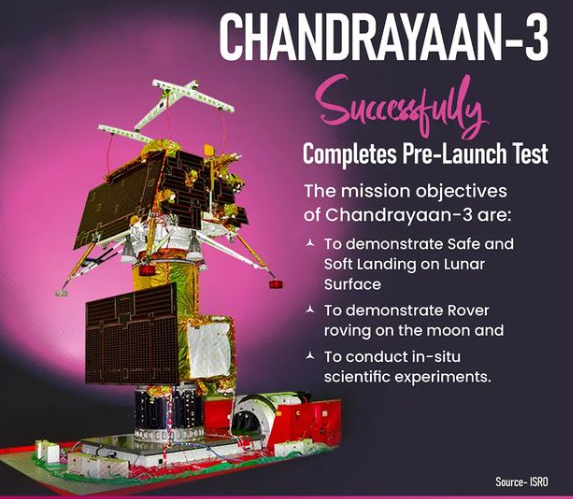
- The spacecraft will be expected to complete the 3,84,000 kilometers-long journeys in nearly 45 days.
- It begins its journey to the lunar world.
- Despite scorching heat and a forecast of dry weather, space enthusiasts had made a spacecraft to the moon mission.
- Chandrayaan-3 is designed with a focus on prior failure-based strategies to enhance mission success.
- The landing area has been expanded, allowing the Lander to safely touchdown anywhere within a 4kmx2.4km area.
- It has changed the Lander’s physical structure include removing the central thruster, strengthening the legs for higher velocity landings.
- It is adding more solar panels for increased power generation.
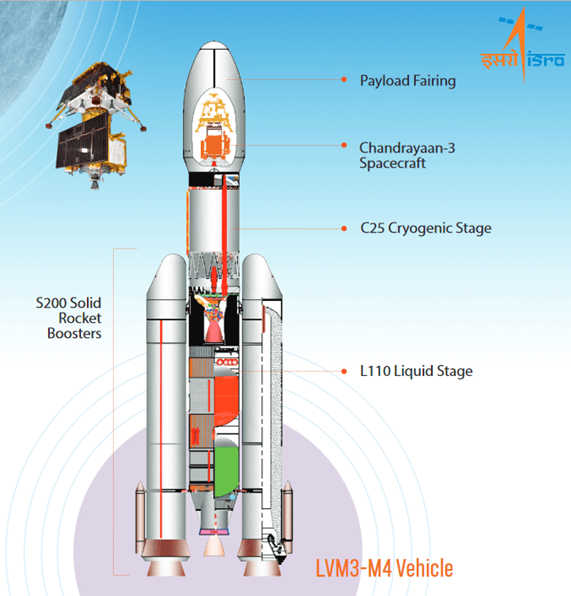
Implementation and Soft Landing
Launch and Timeline
- The LVM3 M4 launcher has been successfully utilized to launch Chandrayaan-3.
- Around 16 minutes after the LVM-3 lifted off, the spacecraft separated from the rocket.
- It has entered into an elliptic parking orbit (EPO).
- The Lander and the rover will have a mission life of one lunar day (about 14 Earth days) as they work on solar energy.
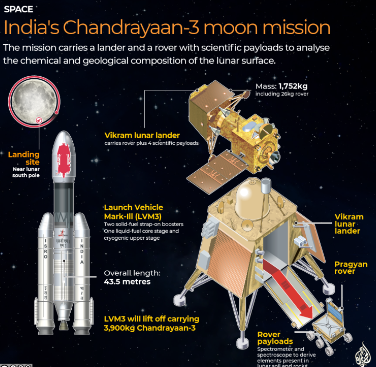
Orbiter
- Chandrayaan-3 will not carry an orbiter but it will use data from the Chandrayaan-2 orbiter.
Landing site
- The site is decided at around 70 degree near the Southern pole of the moon.
Weight
- Due to the modifications made for a safe landing, the weight of the payload is slightly more than the previous mission.
More fuel
- More fuel has been filled for travel longer distances to the landing site or an alternate landing site.
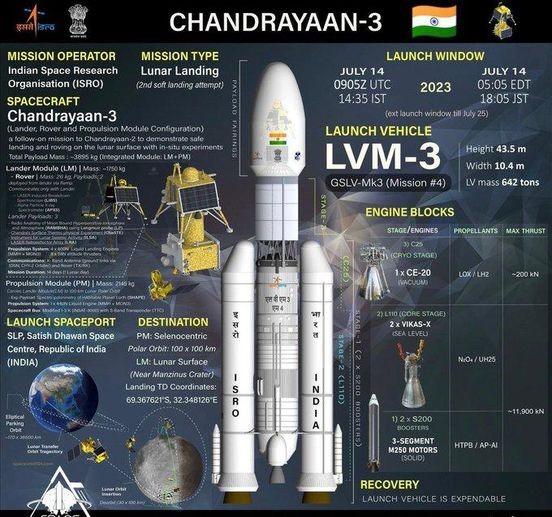
Chandrayaan-3 Landing Date
- The Chandrayaan-3 moon mission has gone without any hurdle.
- The ISRO anticipated that the Vikram Lander will touch down gently on the lunar surface on August 23, 2023, at 5.47 pm.
- Additionally, this exploration will not only focus on the surface but also attempt to investigate the exosphere and subsurface.
- An orbiter from Chandrayaan 2 will be used by the rover of this spacecraft to connect with Earth.
- At a distance of 100 km from the lunar orbit, it will take photographs to examine the surface.
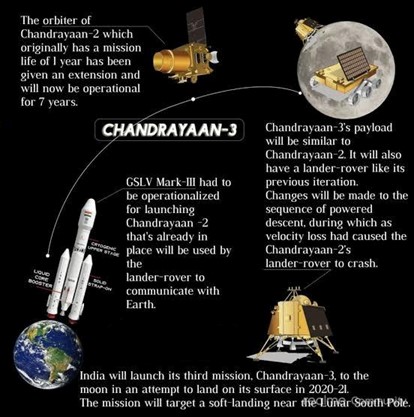
- It is continuously monitor the Lander’s speed and make the necessary corrections.
- This includes an instrument called Laser Doppler Velocimeter.
- It will fire laser beams to the lunar surface to calculate the Lander’s speed.
Importance of Landing near the Lunar South Pole
- Historically, spacecraft missions to the Moon have primarily targeted the equatorial region due to its favorable terrain and operating conditions.
- However, the lunar South Pole presents a vastly different.
- It is more challenging terrain compared to the equatorial region.
- Sunlight is scarce in certain Polar Regions.
- It is resulting in perpetually dark areas where temperatures can reach to -230 degrees Celsius.
- The lack of sunlight and extreme cold pose difficulties for instrument operation and sustainability.
- It makes them potential repositories of valuable information about the early Solar System.
- It is crucial to explore this region which could impact future deep space exploration.
Challenges of landing on the South Pole
- Previous spacecraft have mostly landed near the equatorial region of the Moon.
- Landing near the equator is easier and safer due to the hospitable terrain, smooth surface, absence of steep slopes, and ample sunlight for solar-powered instruments.
- The lunar South Pole, on the other hand, presents a challenging terrain with extreme temperatures and areas that are in permanent shadow, receiving no sunlight.
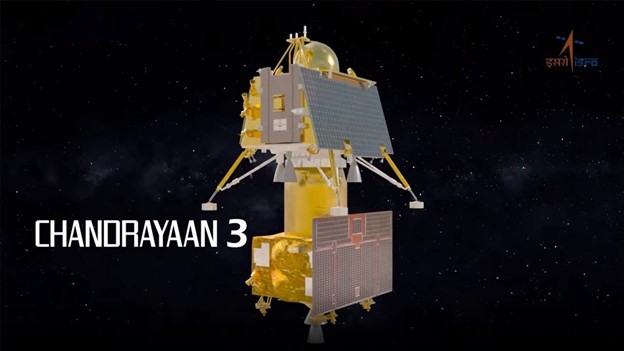
Why ISRO wants to explore the Moon’s South Pole?
- The South Pole region is believed to have water molecules in substantial amounts
- They are possibly trapped as ice in the permanently shadowed craters.
- Exploring and confirming the presence of water is essential for future human missions and the potential utilization of lunar resources.
- It is providing a preserved record of the Moon’s history and the early Solar System.
- The Moon is thought to have formed from debris.
- This debris generated by a giant impact between a Mars-sized object and the early Earth.
- By studying the lunar South Pole, the scientists can gain insights into the materials and condition.
- It is existed during the formation of the Earth-Moon system.
- ISRO-NASA successfully confirmed the presence of water from the data taken by Chandrayaan-1.
- Indo-Japan collaboration, LUPEX, aims to send a Lander and rover to the Moon’s South Pole around 2024.
- ISRO can develop and demonstrate innovative technologies for soft landing, navigation, resource utilization and long-duration operations.
- It can be applied in future space missions.
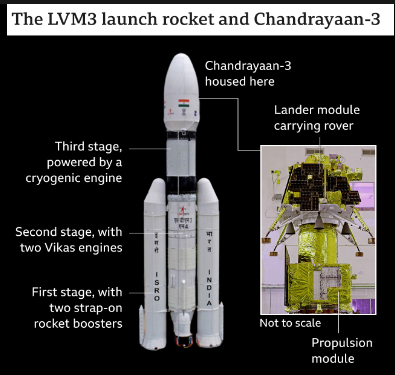
Significance of the Chandrayaan 3 Mission
Historic Lunar Landing
- A triumphant and accurate touchdown on the moon’s surface.
- Through meticulously planned phases, ISRO’s proficiency and unwavering commitment redefine India’s stature in the realm of space exploration.
- As the mission advances, excitement heightens, and the global community eagerly anticipated the momentous lunar landing scheduled for August 23, 2023.
- India's Chandrayaan-3 mission aims to continue the nation's lunar exploration efforts.
- It is built on the achievements of previous missions like Chandrayaan-1 and 2.
Future lunar exploration
- The Mission can play a vital role in India's quest to establish a human presence on the moon.
- The collaboration with JAXA (Japan Aerospace Exploration Agency) for their Lunar Polar Exploration mission (LUPEX) or Chandrayaan-4, etc.
Advancing space education
- The Mission will work towards advancing space education and scientific temper in India.
- It can serve as an inspiration for the scientific community as well as future generations of space enthusiasts.
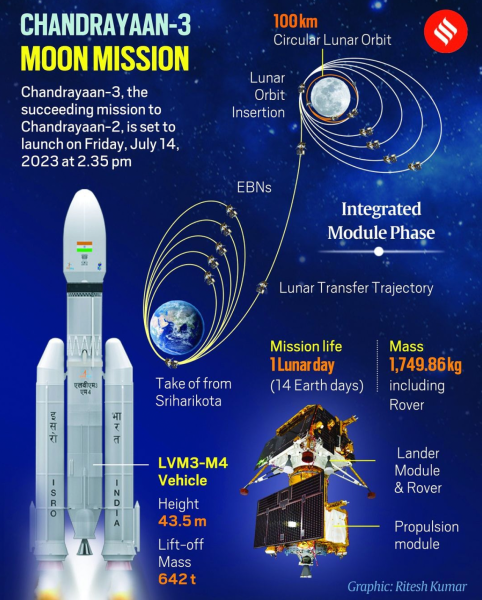
Lunar Surface Exploration
- Chandrayaan-2 rеvеаlеd moon details like landscapе, minеrals, and watеr.
- Chandrayaan-3's landеr and rovеr are studying rocks and soil to understand moon history, possibly revealing asteroid impacts that caused surface changes.
- Focusing on the moon's South Pole, Chandrayaan-3 aims to find minerals, underground features, and water, promising fresh insights into moon geology and resources.
- India aims to continue expanding its lunar exploration capabilities and contribute to global lunar research efforts.
Scientific Discoveries
- Chandrayaan-3 carries tools to study moonquakes and underground heat.
- It will strengthen India's grasp of lunar geology, resources, and surroundings, deepening insights about celestial bodies.
- The Mission sееks to understand seismicity and thermal traits, enlightening.
- It can help to understand the moon's interior workings and broader cosmic areas.
India’s Space Ambitions
- Chandrayaan missions showcase India’s growing space capabilities and technological advancements.
- Successes and setbacks alike contribute to the nation’s experience and expertise in space exploration.
International Recognition
- Chandrayaan missions have earned India international recognition in the field of space exploration.
- They highlight India’s commitment to advancing scientific knowledge and space technology.
Job creation
- India’s booming aerospace technology sector has already created hundreds of jobs.
- It is to create additional high-tech business opportunities, both directly and indirectly.
Nurturing startups
- The success of Chandrayaan-3 could be a technology showcase, boosting India’s goodwill in the global space community.
- This could attract joint ventures and business opportunities for Indian companies.
- It is helping Startups to develop and develop space systems for the global market.
Strengthening international reputation
- Successful completion of Chandrayaan-3 will make India the fourth country to land on the moon.
- It is helping to get global recognition.
- It is leading to the cost-effective adoption of spacecraft.
- It is manufactured by Indian companies.
- This achievement could lead to useful international cooperation.
Strategic Positioning
- The success of Chandrayaan-3 could improve the position of India.
- It is an important player in the international space race, potentially matching China’s influence.
- With Russia facing economic sanctions, it is an opportunity for India to strengthen its position.
- Together with Artemis Accords, it will enhance India's ever-increasing space footprints.
- It is imperative to chart the way forward strategically.
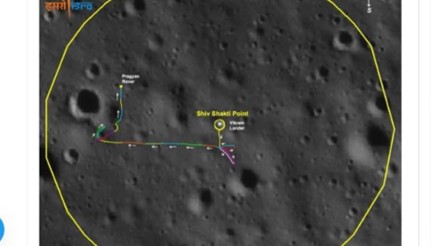
-------------------------------------
Leave a Reply
Your Comment is awaiting moderation.


